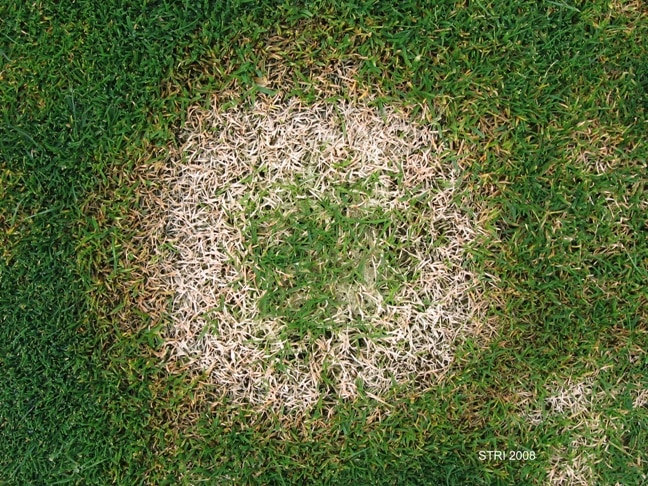Home / Information & advice / Turf & Lawns / Lawn diseases / Snow moulds & Fusarium pink patch
If the above conditions identify your turf problem, then snow moulds may be present on your turf.
Snow moulds are a group of fungi that are capable of attacking your grass when the air and soil temperatures are too cold for the grass leaves to grow. There are many different fungi that can attack your turf in the cold, but all of them require months of cold, wet weather. If the grass leaves are dry or the days are warm enough for the grass to grow, the snow mould fungi cannot attack your turf. These fungi are natural members of your turf, and they are difficult to control without fungicides.

Whilst there are many different fungi that attack grasses when they are cool and wet, the most common diseases are grey snow mould and Fusarium pink patch (pink snow mould). Both of these diseases start to develop in the autumn of the year, but the disease symptoms are only observed in the winter and early spring. The other snow mould diseases occur rarely, and their identification requires an experts examination. It is important to determine which snow mould (grey or Fusarium pink patch) is attacking your grass, because they develop and are controlled differently.
Grey snow mould is characterised by its grey mycelium, tan grass leaves, and formation of sclerotia. If you are a grass pathologist these terms mean a lot, but if not, don’t despair, they are easy to understand. All fungi produce mycelia. Mycelia are very tiny hair-like tubes that are grey in colour, but thinner than a spiders web.
When there are enough of them together, they are visible with the naked eye. You will only observe mycelia if the turf is wet. The best time to look for them is in the morning. Spiders, insects and other organisms will produce mycelium-like materials, so some care needs to be taken.
The grey snow mould fungus also produces sclerotia. Sclerotia are hard, small bodies that protect the fungus from drought, heat and so on. They are about the size of a pin head. You can find these in the dead grass leaves of a patch. Sclerotia are found only after 3-5 months of cool wet weather. Look for them in the early spring, but don’t be disappointed if you cannot find them, sometimes they do not form.
Keep your turf mown properly, never let it get too long before you stop mowing it in the autumn of the year. Never fertilise your turf too close to the time when the grass stops growing in the autumn. Do not walk or play on frozen turf. This damages the leaves and attracts snow mould fungi. Finally, if your turf had snow mould last year, you might want to consider a fungicide treatment in the autumn.
Timing the application of fungicides to stop the snow moulds is tricky, because you must first determine which snow mould disease you have, and then you must apply the fungicide about the time the disease starts developing. Consult a turfgrass expert for help with the use of fungicides.
We recommend that you obtain advice about chemical and non-chemical grass treatment products directly from the manufacturer.
This disease also requires cold, wet weather, but develops faster than grey snow mould, requiring only a month or so for the disease to appear in your turf. It, too, produces mycelium, but fortunately it is often pink or red. Fusarium is the Latin name of the fungus that causes pink patch. Whilst the Latin name means little to most of us, it tells the plant pathologist that this fungus does not produce sclerotia, but instead produces millions of very tiny spores that can spread the disease.
Because snow moulds require cold, wet weather and are not dependent on snow covering the turf, these diseases can continue to develop in the late winter or early spring. However, in most years as soon as the grass greens up and starts growing, the snow mould diseases will disappear. The best way to rid your turf of snow mould patches is to encourage the grass to grow, by applying fertiliser and mowing it. In addition, hand raking the snow mould patches will encourage the grass in those areas to grow quickly.
Snow moulds can kill your turf. Usually, however, they only kill the leaves, and your turf will recover in the spring.